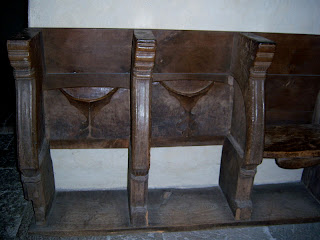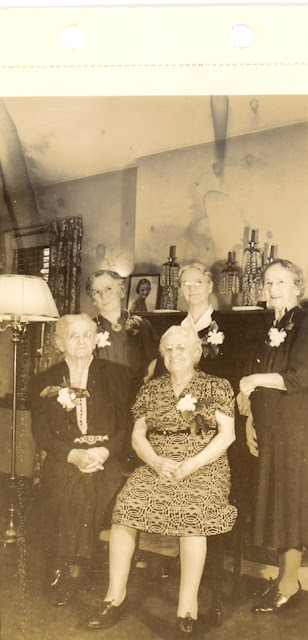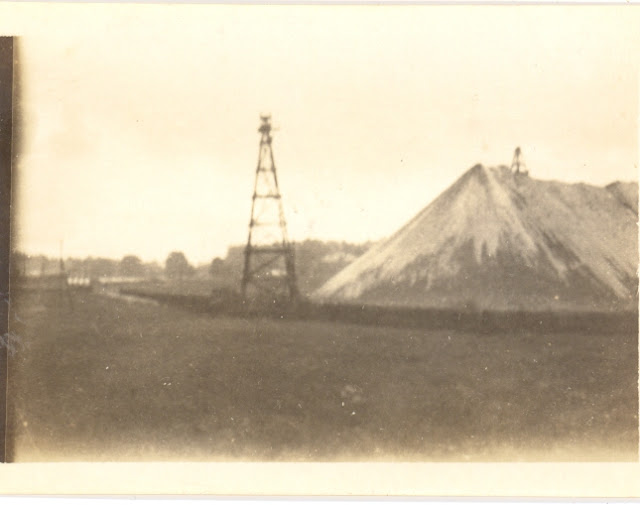Scandinavia's Separate Identities
Looking for Pre-Christian Histories
Tribe of Dan; Sigge Fridulfson
This topic is to file interesting bits, while looking for more concrete vetting.
Old sources spark interest in history, offer a starting point for vetting truth from legend, as far as feasible.
There is a 19th Century historian's account of Swedish history, along with its legends, oral tradition. See
http://www.sverigeturism.se/smorgasbord/smorgasbord/society/history/vikings.html. Christianity stems also largely from oral tradition later written down, with conflicting accounts, as does any human tradition.
- Relevance: Comparative Viking lore. There appears to be a difference in terms of violence between Swedes in the pre-Viking and Viking era, that are found as settlers and traders in Russia-Finland, on to Novgorod and Kiev and beyond: and those of Norway and Denmark. This timeline makes no mention of the Eastern European Viking thrust, see http://jorvik-viking-centre.co.uk/who-were-the-vikings/viking-timeline/.
- If there is a difference, is that a matter of opportunity, and not culture. Eastern rivers and portages were areas offering furs, honey, slaves; but not gold (is that so?) and treasure. Control of turf became a focus of the Vikings in the East, who established the Rurikid Dynasty, and were called the Rus. Vikings also gained territory in the West, but seem better known for their raiding, is that so.
- Or is the difference one of heritage. Were there migrations north from Central Europe, the Middle East, so that the settlers -- who also might have stayed along the way - brought skills and lore with them that shaped the cultures. Sweden: exposed more to the East. Norway and Denmark: exposed more to the West. Not sure.
- Pursuit of migrations -- no idea if this will show any matters of verifiable interest.
Person-legend of interest: One
Sigge Fridulson, or
Sigge Fridulfson, or Sig Fridulfsson, long before the Vikings. Does the word
Viking come from Norse
vik, meaning
bay? see
http://www.sverigeturism.se/smorgasbord/smorgasbord/society/history/vikings.html. There is a town of
Vik and on a bay in Norway.
One theory, not commonly found (
not in
Brewer's Dictionary of Phrase and Fable from 1894, or other starting point for some mention of an issue, like Chronicles). There are references there, however, to Dan, Tribe of Dan, not only for Scandinavia but Ireland, another migrant target in early days.
Fridulfson: Should be be called merely Sigge, without the patronymic? was a leader, perhaps later King, who arrived with his group from the Caucasus, took the name of Odin so he would be followed by the peoples of the North; and that worked so well that nobody (hardly) remembers his real name at all. Is that so?
Sigge Fridulson, Legend of Origins of Swedes. Any Fact?
Find
The History of Sweden, work dated 1844, by Stockholm historian and scholar Anders Fryxell, 1844. The origins of Swedes sound, in this account, from the Caucasus BC.
Scandinavia is the misleading catch-all concept for three of the northern European identities: Norway, Sweden and Denmark. Sweden differed from Denmark and Norway in where it spread its energies
-- south and east, through Russia-Finland (boundaries evolved) to the Black Sea and beyond to Byzantium and
Baghdad; rather than focusing on Western Europe and the British and
other Isles around and inland into Europe, and then into the Mediterranean, and North Africa, and the Middle East-Eastern Europe. Much of that early distinction resulted from proximity to which waterways.
So far, these may be so:
1. Early people were in Sweden as long ago as 12,000 BC. They were forced back to the coasts as the climate became colder, then a cultural swing moved people from farm to boat and back, and settlements finally firmed up in both kinds of areas in 8000 BC, see
http://www.geographia.com/sweden/history.html/
These are not related to later migratory groups?
2. In Sweden, the most northern early group were the Svear of Svealand. They finally conquered the more southern Gotar of Gotaland, said to be (unproven) ancestors of the Goths. The Swedes do not appear to share in the same degree of plunder-raid activities of the Norse, and the Danish, Vikings. See an everyman's history overview at
http://www.infoplease.com/ce6/world/A0861386.html/
There could be historical reasons for this de-emphasis by Swedes on violence. Swedes were not subject to the same degree of invasions and abuses of institutional Western Christianization moving north, see Charlemagne and the expanding and military Holy Roman Empire through Germanic lands and elsewhere. See
Sachsenhain, Verden, Germany, for example. They had increasing reason to seek revenge against atrocities the institutional religious incursions as they escalated, including the Baltic Crusades, see overview of use of force at
http://berkleycenter.georgetown.edu/essays/christianity-and-religious-freedom-in-the-medieval-period-476-1453-ceas. That escalation was after the Viking Age, however.
Missionary activity: Generally stage I is benign. Individual missionaries convert by example, living among the people, see Our own history: not so nice, but how much of the violence is so, and how much is venting -- need to vet it all, but see the negative side at Christian History, at
http://freetruth.50webs.org/A1.htm
Panoply deities: see overview at
http://languageisavirus.com/questions/were-pre-christian-germannorse-gods-historical-kings/ How many if any have historical roots.
Still, the Roman version of Christianity spread north into Sweden at an early stage. The impact was felt in laws, investiture rights, tax exemption of the church, and secular immunity for priests, see /://stason.org/TULARC/travel/nordic-scandinavia/2-5-6-Christian-and-pre-Christian-laws.html/
Use of the term "paganism" to describe the pre-Christian millennia seems patronizing. A pejorative. Instead, there is merit to belief in a panoply deism religion, and even the Trinity idea is a panoply -- the rest is semantics. Is that so? The Christian monotheist idea spread more by violence than quiet voluntary persuasion, is that so. Convert or die? See So why downgrade the panoply deists.
Downgraded they are. The panoply deist Kings lying in minimal state in a dusty old church, poorly marked, and off the glamour track.
829 AD: St. Ansgar seems to be the first missionary of clout. But it took another 200-300 years to count much of Sweden as converted.
12th Century -- Christianity by now entrenched.
What are the influences of the old panoply deist belief system, as it crosses over into Christian symbols and practices.
The post-Christian era is well documented.
1319 -- Fast forward to Sweden and Norway unite. King Magnus VII (why? why not tell us about the interim, between St. Ansgar and what he found and did, and hundreds of years later?)
1397 -- Queen Margaret I united Denmark to Sweden and Norway, in the Kalmar Union (see Kalmar Castle). That did not last beyond her death, however. The Swedes would have none of it.
1520 -- Christian II (nationality?) asserted his claim to the Swedish throne by force, and slaughtering the nobles of Sweden at Stockholm.
1523 -- The Swedes put their own Gustavus Vasa on the throne, as Gustavus I. But the southern provinces of Sweden were still held by Denmark, and Eric XIV, successor to Gustavus, then set about conquering Livonia, in the other direction. See the Sweden History site for the rest, into modern times.
But where are all the pre-Christian Kings, the panoply deists. Why is that buried? Or is it simply too unrooted, too speculative. Was everything of merit also disregarded, or stomped out by the Christians. Where are the Kings? Go back to Upsala. Have to find Sigtuna perhaps, but at the time Upsala seemed enough. Back to Linkoping: Vreta, Vadstena, Vanern, where else? King Inge. Woods people of the Ingwaz want to know. The Wids of the Tale. Wid-Inge. Recreational speculation is good for the humors.
Histories of Sweden, Legends of the Great, like Sigge Fridulson or Sigge Fridulfsson -- if there was such, or are the Swedes really descended from Odin? And legends of the little. Recreation, and curiosity. Sweden could use a tourist bureau to set up a History Road, like Germany and other countries have a History Road, a Wine Road, a Fairy Tale Road. Help us along.*
.....................................................................................
* Who was Odin. Name also given as Wotan, Odan. An ongoing journal of comments, sources, people's ideas about Odin as man or god or both, in any given belief system
Re: Odin is God, comment by Anonymous Reader at the Origin of Swedes post, above, recopied here just to keep it handy. Note, though, that Godan is a rank in the martial arts; and also from a prominent Gaming system. Everybody games.
' It has very little to do with Sweden apart from that Odin incarnated again and came there. Odin is God. The very silly propaganda that are being posted and planted everywhere is a brainwash. Odin is the God of this world AND he has been reincarnated several times with different names. He is Allfather and all that comes with that title. There is no other "God" than Godan.'
Re: How was Odin seen in the pagan sources later written down by a Christianized Icelandic scholar (tainted translation or recording?) this from a thread discussion between "Malthus" and "Mr. Tuffpaws", fair use of two bits from a long discussion (this is to urge you to go read it all) at
http://boards.straightdope.com/sdmb/archive/index.php/t-543500.html. Malthus and Tuffpaws: if you object to my referencing this bit of your discussion, let me know and I will take it down.
Malthus: " *** An Old Norse book called Heimskringla purports to trace the ancestry of some of Scandinavia's historical kings back to someone named Odin. I believe the current crop of British and Scandinavian monarchs are descended from some of the historical kings mentioned in the book. The version of the book that has come down to us was written by the Icelandic scholar Snorri Sturluson, a Christian. In his telling, this Odin was a mortal man, not a god. I don't know if this Odin was the god Odin in Snorri's pagan sources."
Mr. Tuffpaws: " * * * [I]t is quite possible that an actual man has been deified, or conversely, that a diety has been substituted for a man.
"In comparative anthropology, it is not unusual for a society at the "chieftianship" stage to have chiefs who claim divine descent (traces of this very ancient practice even show up in the Hebrew Bible, where the "heros of old" are said to be descended from "sons of God" mating with mortal women).
"It went the other way around. The god became manified. Snorri Sturluson, when he wrote his sagas, Christianity was well entrenched. No one of the time would consider gods outside of Christ as real, either in history or their current time. Snorri to make sense of the pagan pantheon, determined that the Vinar were made up of a ruling tribe of people that were attacked from the east by the Æsir tribe. After a protracted war, they merged and became the Æsir that is known as the gods of Norse mythology. Snorri considered them great men of history, and that view point carried on for quite sometime. It only makes sense that royal families would attribute their lineage to such legends."
Re: Odin, Odan as it sometimes appears [see comment above] as leading the lost tribe of Dan - and this area gets into theological-agenda sources I am not interested in except as those sources may corroborate or contradict demonstrable history -- the Lost Tribe of Dan. Those sources also help interpret representations of Dan, see eagle and snake.
Overviews: See
Tribal Identification: Dan The essence seems to be that there was a great tribal migration from Israel and that is tracked by trackers to most of the globe -- see all the places with Dan Den Din Don Dun Dyn in the language word (Hebrew would be DN, with the vowel to be supplied, and which, and how it sounded, is speculation). Danube, etc. Dan-mark. Etc.
Why is this, if it is tribe of Dan, at Town Hall in Bremen? Those of the Tribe of Dan liked to go to court, they were the judgers, so it is said. See
http://www.britam.org/dan2.html; see also
http://www.crwflags.com/fotw/flags/il_tribe.html (do a "find" for Dan)
Bremen Town Hall: see
http://germanyroadways.blogspot.com/2010/11/bremen-babies-and-gryphons-crypt-celts.html
 Burial, King Inge the Younger, closeup, light shed, Vreta Kloster, Berg, Sweden
Burial, King Inge the Younger, closeup, light shed, Vreta Kloster, Berg, Sweden Vreta Kloster Kyrch, Burials of Medieval Royalty, Sweden
Vreta Kloster Kyrch, Burials of Medieval Royalty, Sweden Burial, King Inge the Younger (sadly, in the dark), Vreta Kloster, Sweden
Burial, King Inge the Younger (sadly, in the dark), Vreta Kloster, Sweden Burial, King Magnus Nilsson, Vreta Kloster Kyrch, Berg (Linkoping) Sweden
Burial, King Magnus Nilsson, Vreta Kloster Kyrch, Berg (Linkoping) Sweden
 Swedish Monarch Lineage, House of Stenkill (Kings Inge Elder and Younger, King Magnus notably)
Swedish Monarch Lineage, House of Stenkill (Kings Inge Elder and Younger, King Magnus notably) Burial, Prince Sune, son of King Inge the Elder
Burial, Prince Sune, son of King Inge the Elder Inscription detail, Prince Sune, sone of King Inge the Elder, or other relation? Accounts are inconsistent
Inscription detail, Prince Sune, sone of King Inge the Elder, or other relation? Accounts are inconsistent Burial, Prince Regnvald, son of King Inge the Elder, Vreta Kloster, Sweden
Burial, Prince Regnvald, son of King Inge the Elder, Vreta Kloster, Sweden Prince Regnvald, son of King Inge the Elder, coat of arms closeup, Vreta Kloster, Sweden
Prince Regnvald, son of King Inge the Elder, coat of arms closeup, Vreta Kloster, Sweden aa
aa Unknown burial, Vreta Kloster, Sweden. Note the skull and crossbones
Unknown burial, Vreta Kloster, Sweden. Note the skull and crossbones Burial, Arvid Borenius, Vicar, and wife, Vreta Kloswster, Sweden
Burial, Arvid Borenius, Vicar, and wife, Vreta Kloswster, Sweden Vreta Kloster, Vreta Abbey Church, Berg, Sweden. Exterior
Vreta Kloster, Vreta Abbey Church, Berg, Sweden. Exterior Side-lined special pew, Vreta Kloster, for son of monarch, and who had rage disability, or perhaps epilepsy, so he could atttend services.
Side-lined special pew, Vreta Kloster, for son of monarch, and who had rage disability, or perhaps epilepsy, so he could atttend services. Poor box, perhaps, Vreta Kloster, Berg, near Linkoping, Sweden
Poor box, perhaps, Vreta Kloster, Berg, near Linkoping, Sweden Madonna and Child, Sancta Maria de Vretis perhaps, Carving, Vreta Kloster, Berg, Sweden. May be 11th-12th Centuries
Madonna and Child, Sancta Maria de Vretis perhaps, Carving, Vreta Kloster, Berg, Sweden. May be 11th-12th Centuries Saint, perhaps Apostle, Carving, Vreta Abbey, Vreta Kloster, Sweden
Saint, perhaps Apostle, Carving, Vreta Abbey, Vreta Kloster, Sweden Frescoes, walls, Vreta Kloster
Frescoes, walls, Vreta Kloster Choir stall bum-proppers, Vreta Kloster, Berg, Sweden
Choir stall bum-proppers, Vreta Kloster, Berg, Sweden Vreta Abbey, Vreta Kloster, Berg, Sweden. Burial chapel for the Douglas Family
Vreta Abbey, Vreta Kloster, Berg, Sweden. Burial chapel for the Douglas Family Family crests, Burial vaults for Douglas still?
Family crests, Burial vaults for Douglas still?  Wood-carved family crest, painted; Vreta Kloster, near Linkoping, Sweden
Wood-carved family crest, painted; Vreta Kloster, near Linkoping, Sweden Bolted door, Vreta Monastery, near Linkoping, Sweden (Vreta Kloster)
Bolted door, Vreta Monastery, near Linkoping, Sweden (Vreta Kloster) Baptismal font, Vreta Kloster, Linkoping (Berg) Sweden
Baptismal font, Vreta Kloster, Linkoping (Berg) Sweden Pulpit, 1600's, and view, Vreta Kloster, Berg, Sweden (Linkoping)
Pulpit, 1600's, and view, Vreta Kloster, Berg, Sweden (Linkoping) Eagle bitten by snake. Lost Tribe of Dan? Bremen
Eagle bitten by snake. Lost Tribe of Dan? Bremen  Ekeby Kyrke, Boxholm
Ekeby Kyrke, Boxholm Ekeby Church, Sweden? Photo 1920's-1930's
Ekeby Church, Sweden? Photo 1920's-1930's Ekeby Kyrke, near Boxholm. Photo 1920's-30's.
Ekeby Kyrke, near Boxholm. Photo 1920's-30's. b
b Is that Hans Widing, Farfar, on the left?
Is that Hans Widing, Farfar, on the left? Traditional dress on the right. Who is that with Anna, on the right?
Traditional dress on the right. Who is that with Anna, on the right?  Flood? Vanern? Whose home? Sweden, Boxholm - Kinnekulle trip 1920's - 1930's
Flood? Vanern? Whose home? Sweden, Boxholm - Kinnekulle trip 1920's - 1930's Possibly Husaby Kyrke, at Kinnekulle (area of Anna Osterlund Widing)
Possibly Husaby Kyrke, at Kinnekulle (area of Anna Osterlund Widing) Lake Vanern?
Lake Vanern? h. Anna Osterlund Widing, standing, middle. Is her mother Kajsa Johannsdotter in there? Widings?
h. Anna Osterlund Widing, standing, middle. Is her mother Kajsa Johannsdotter in there? Widings?  Foundry slag heap, Boxholm, Sweden
Foundry slag heap, Boxholm, Sweden Is this Ekeby, Sweden?
Is this Ekeby, Sweden? l
l Heaving hay. Who had the farm?
Heaving hay. Who had the farm? Looking these up.
Looking these up.
 The Bungers? Sweden 1929-1932
The Bungers? Sweden 1929-1932
 MS Kungsholm
MS Kungsholm If this is the Kungsholm, is there another? This looks 1930's or 1929, not the 1950's.
If this is the Kungsholm, is there another? This looks 1930's or 1929, not the 1950's. Martha, Lee, Bill, Ella, Oscar
Martha, Lee, Bill, Ella, Oscar Vadstena Abbey? Lake Vattern, Ostergotlund 1929-1932
Vadstena Abbey? Lake Vattern, Ostergotlund 1929-1932 Widing home, Boxholm
Widing home, Boxholm Stockholm, the Guard
Stockholm, the Guard